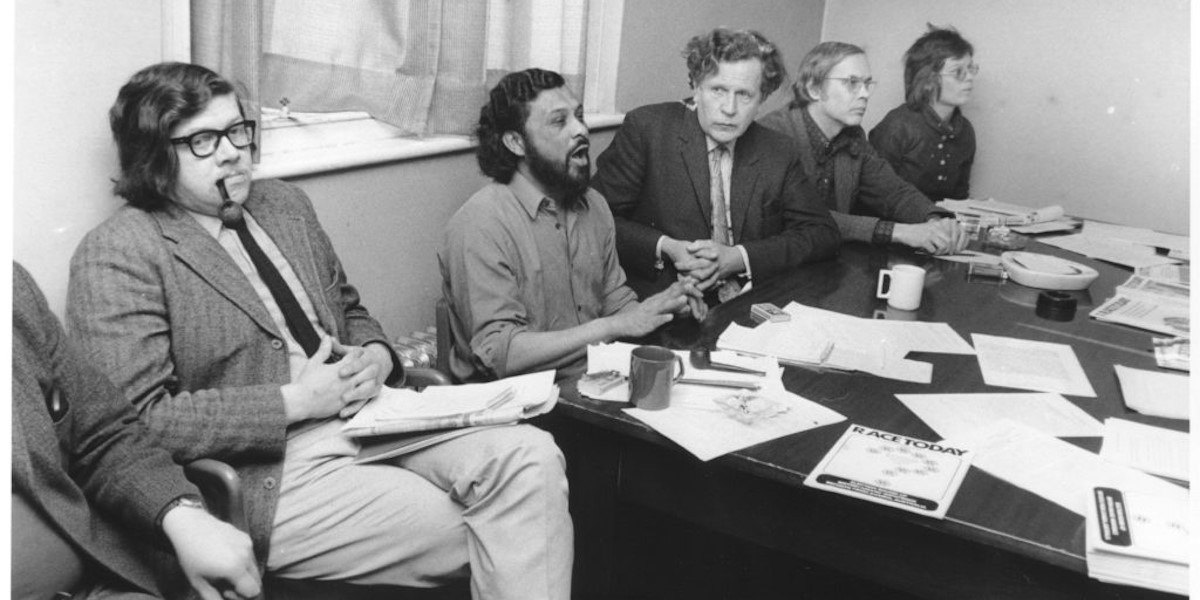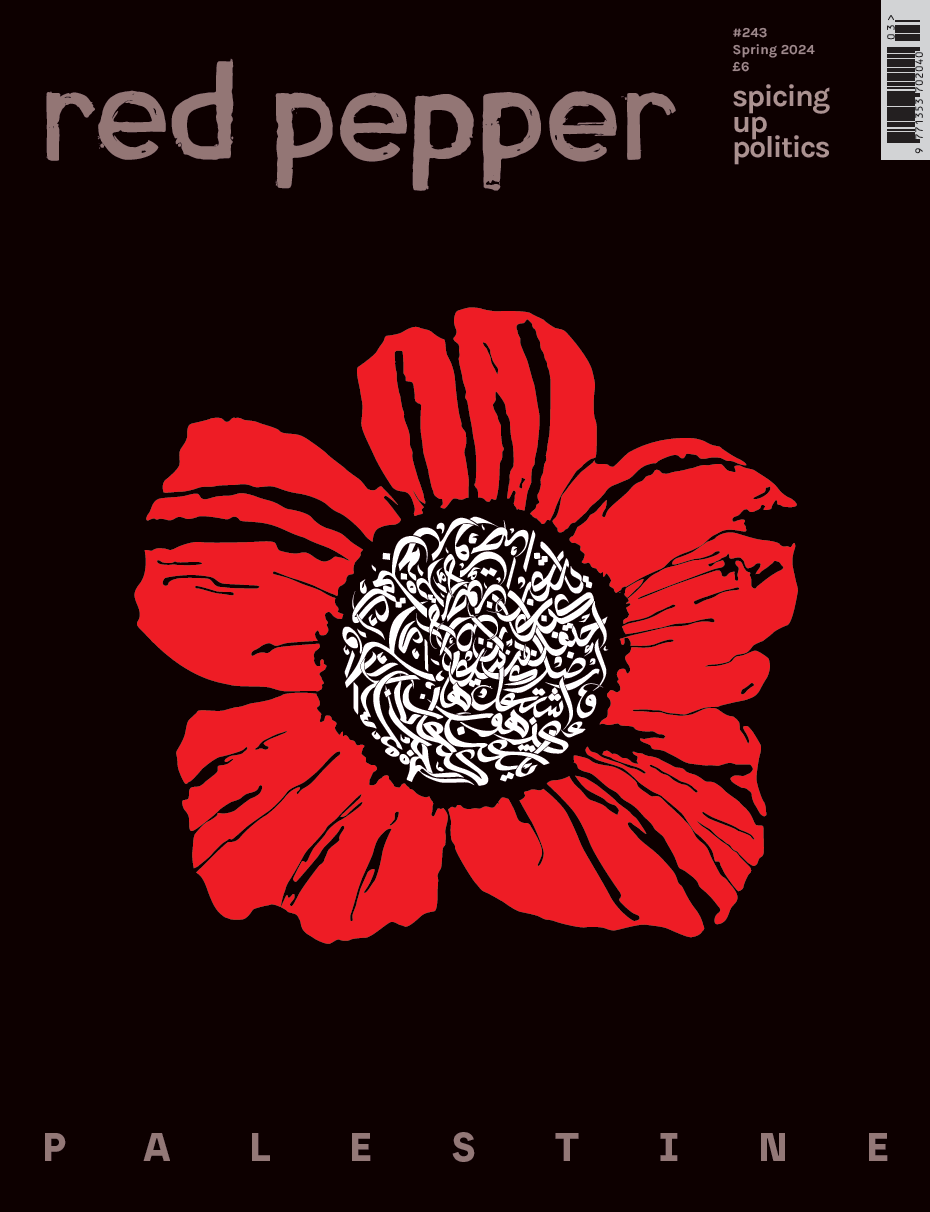On a balmy evening on 18 April 1972, a somewhat incongruous group of people entered the basement hall of St James’s Church, Piccadilly, for a meeting that would have far-reaching consequences for anti-racism in Britain. Businessmen, black power activists, academics, journalists, MPs, members of the House of Lords and activists descended the narrow steps to attend an extraordinary general meeting of the Institute of Race Relations, convened due to a dispute between the IRR’s council of management and its staff on the direction and content of the institute’s magazine, Race Today.
An hour and a half later, the businessmen, MPs and Lords that made up the council resigned their positions and slunk out into the night, having been defeated by 94 votes to eight by the members in a vote resolving to commend the staff and editors of Race Today for its coverage. Until that moment, the study of race relations was overseen by the establishment, under the political sway of government and financed by the type of corporations that funded the IRR – Rockefeller, Shell and the Ford Foundation. At that time, despite clear evidence of black people’s experience of racism, the collective wisdom in the growing official ‘race industry’ was to take a ‘neutral’ and ‘impartial’ approach to research. In effect, this made black and immigrant communities the problem, not the state or its racist immigration policies.
After the ‘coup’
After that ‘palace coup’, the IRR, which had grown out of the Royal Institute of International Affairs at Chatham House in the late 1950s, was transformed into a radical and explicitly anti-racist educational think-tank. Under the leadership of key black thinker A Sivanandan from 1973, it challenged race orthodoxies, arguing that the field of study should not be ‘race relations’ but racism – a moral and political issue that doesn’t allow for neutrality – and that those who experienced racism should lead the fight against it.
The IRR eschewed focusing on identity, diversity and racism awareness training to continue to highlight the structural, material and economic processes that baked in institutional racism
With the corporate backing going out with the old management, the IRR moved from its plush offices on Jermyn Street to more modest surroundings in King’s Cross. While its political lens had changed monumentally, the institute was still a research body, albeit one that had less interest in speaking to government. Instead, it gave frontline activists the analysis to fuel their journey on the way to liberation.
As the Race Today collective moved to Brixton in 1974, the IRR’s dry journal Race became Race & Class: A Journal for Black and Third World Liberation. Edited by Sivanandan, it published the work of scholar-activists, revolutionaries and thinkers, including Edward Said, Angela Davis, Walter Rodney and Noam Chomsky. On much leaner resources, the institute produced cutting-edge research, including the seminal Police Against Black People, which was given as evidence to a public inquiry. With its distribution through the Inner London Education Authority, the IRR was one of the first to ‘decolonise the curriculum’ with its series of illustrated books on racism for schools.
This year, the IRR celebrates its half-centenary with a series of events and projects under ‘IRR50’. But what does it have to teach anti-racists today? Still run on a shoestring, it produces key resources for activists, with reports on gentrification, school exclusions, the ‘hostile environment’, police racism and citizenship, as well as introducing new analytical frameworks such as xeno-racism and reproductive racism. It also compiles a fortnightly calendar of ‘Racism and Resistance’ tracking patterns, trends and cases across Europe.
Tools for today
Alongside these tools for action, a key contribution of the IRR is its steadfast commitment to its principles, including the belief that anti-racism is inextricably tied to anti-imperialism. When even some progressives fell in line with western-centred, civilisational narratives during the so-called ‘war on terror’, the institute exposed how such rhetoric gave succour to a deepening, state-sanctioned Islamophobia. Without following any particular dogma, it has consistently questioned norms and exposed contradictions.
When others were internalising neoliberal discourses, the IRR eschewed focusing on identity, diversity and racism awareness training to continue to highlight the structural, material and economic processes that baked in institutional racism. On that score, the IRR has been proven right in its consistency. As the deficiencies of the diversity agenda become starker, a Conservative government has effectively subsumed liberal anti-racism, with its ‘most diverse cabinet in history’ presiding over deepening injustices while passing legislation and waging a ‘war on woke’ designed to entrench and conceal them.
Standing the test of time
Among a new generation of anti-racist scholar-activists, it is clear Sivanandan’s and the IRR’s analysis has stood the test of time. Two recent books, Anti-racist Scholar-activism by Remi Joseph-Salisbury and Laura Connelly and Race to the Bottom by Azfar Shafi and Ilyas Nagdee cite the IRR’s influence, as they seek to recover Britain’s radical anti-racist history to inform the struggles of today.
This is why IRR50 isn’t just a look back at what has come before, but is about forging a path towards stronger, coherent and relevant anti-racist praxis in an increasingly authoritarian and reactionary polity. In September, the IRR will be an event partner for The World Transformed, hosting a panel that considers that history, but looking hopefully towards emergent sites of resistance: copwatch networks, abolitionism and the communities fighting to stop immigration raids.
The half centenary will culminate with a conference at King’s College London on Saturday 15 October. Titled ‘New Circuits of Anti-racism’, it will bring together key activists and thinkers from the UK, Europe, the Middle East and North America to discuss not only the enduring influence of the IRR’s transformation and Sivanandan’s ideas, but also urgent questions on how anti-racists should approach new imperialisms and fast-changing geopolitics, and what organisers here can learn from US abolitionist movements to defund and divest from the criminal justice system.
As Shafi and Nagdee note, this excavation of the British anti-racist tradition is not to romanticise or retreat into that history, but to extract lessons for today. Sivanandan believed the struggle for the IRR showed we do not need to be ‘paralysed by our histories’. Reflecting on the coup, he wrote, ‘to apprehend the social consequences of what we ourselves are doing and to set out to change them is in itself a revolutionary act’. That revolutionary act has lasted half a century – support the IRR fundraiser and join us this autumn to plot the next 50 years.










